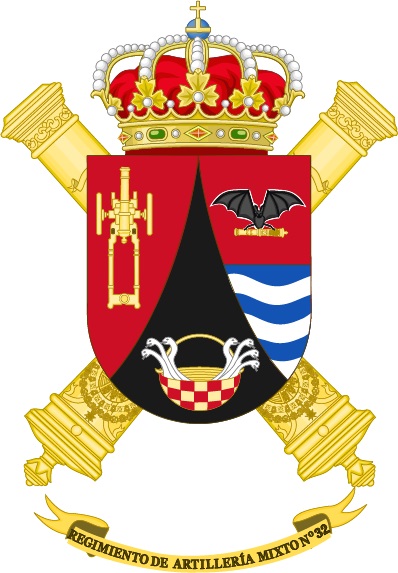MENÚ UNIDAD
ARMY UNITS
- Araba Álava |
- Albacete |
- Alicante |
- Almería |
- Asturias |
- Ávila |
- Badajoz |
- Barcelona |
- Burgos |
- Cáceres |
- Cádiz |
- Cantabria |
- Castellón |
- Ceuta |
- Ciudad Real |
- Córdoba |
- A Coruña |
- Cuenca |
- Girona |
- Granada |
- Guadalajara |
- Gipuzkoa |
- Huelva |
- Huesca |
- Islas Baleares |
- Jaén |
- León |
- Lleida |
- Lugo |
- Madrid |
- Málaga |
- Melilla |
- Murcia |
- Navarra |
- Ourense |
- Palencia |
- Las Palmas |
- Pontevedra |
- La Rioja |
- Salamanca |
- Segovia |
- Sevilla |
- Soria |
- Tarragona |
- Santa Cruz de Tenerife |
- Teruel |
- Toledo |
- Valencia |
- Valladolid |
- Bizkaia |
- Zamora |
- Zaragoza

Background
- pagination
-
Military Record

It was on September 17th, 1497, when nineteen artillerymen, part of a group commanded by Pedro de Estopiñán y Virués, and commanded by a senior artillery officer, stepped onto the shores of what is known today as Melilla for the very first time.
After 1774, due to the siege to which this city was subjected by Moroccan forces, the artillery within the town was increased to 117 guns and 25 mortars, with 273 artillerymen.
In 1891, by Royal Order of February 18th, the 13th Garrison Artillery Battalion was created, inheriting the flag of the 6th Foot Regiment from the Artillery museum, becoming the garrison’s first Artillery unit and the precursor to the current Artillery Regiment.
In 1909, more than a hundred years ago, the batteries of Montaña and Montada again fought against the Rif forces (Sidi-Musa y Sidi-Hamed el Hach).
The Rif campaign caused the Artillery Command to be reorganized. The Mixed Field Artillery Group was disbanded and the Melilla FA Mountain Regiment was created, later becoming the Melilla Mixed Artillery Regiment (1917), under which name it took a very active part in the campaign of 1921.
Later, it was active in the Peninsula with various units in the 13th Division of the Moroccan Army Corps´ command and fought in several campaigns between 1936 and 1939, such as Brunete, Belchite, Gandesa, Lérida, Barcelona, distinguishing itself in the fighting around Ciudad Universitaria and Bielsa, returning to Melilla once the war had ended.
When the war is over, the Artillery Task Force was disbanded and the 33rd, 34th and 50th artillery regiments were created.
In 2008, the 7th GAAAL (Light AAA Group), constituted in 1985 from the Regiment’s 2nd Group and stationed at the facilities of the abovementioned battery M-1, is merged with the 32nd FA Regiment, thereby the current 32nd Mixed Artillery Regiment, with a new banner since October 1st.
On September 17th, 2010, the Autonomous City of Melilla Council agreed, by unanimity, to decorate the Regiment with its greatest award: the Gold Medal of the City of Melilla.
Along with this award, we should mention those received throughout its history, in the many combat actions and campaigns in which it has taken part: 8 San Fernando Individual Laureled Crosses, 1 San Fernando Collective Laureled Cross and 4 Collective Military Medals. In its service to the nation, it has suffered casualties numbering some 1.506 dead and 3.841 wounded.



